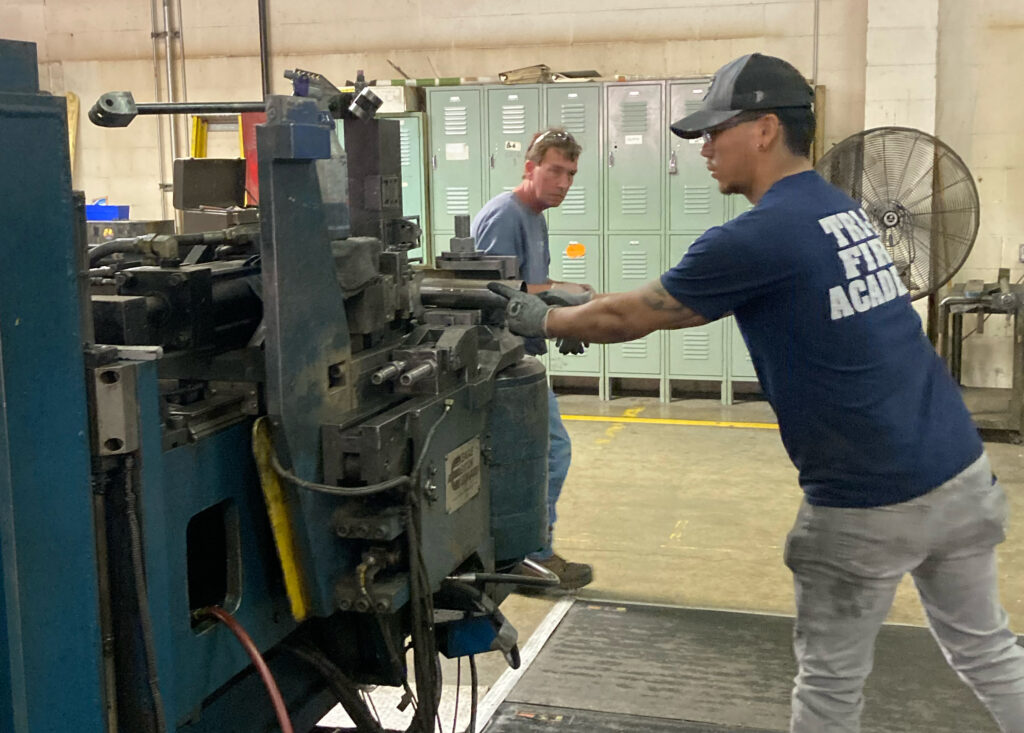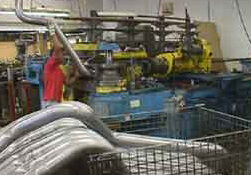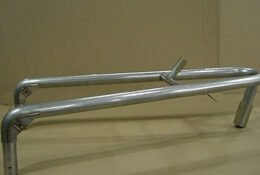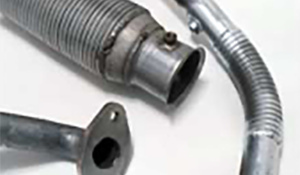Service FAQs
Why is it costly to produce my part in small quantities (1 to 10 Pieces)?
The machinery and tooling used to bend large diameter tube is very heavy. It is very time-consuming to "set-up" a machine to bend a specific material on a specific bend radius. Blanket purchase orders or other agreements allow us to run your part in larger batches thereby amortizing the set-up cost over more pieces and thereby reducing individual part cost.
What can I do to reduce cost?
Specify a liberal tolerance associated with the bend radius – we suggest plus/minus 1 inch. This sounds like a large tolerance, but the visual difference is very small. This can help reduce special set-ups. Batching parts also will reduce cost. (see first question above)
How do I specify a “bend?”
If you have a sketch or drawing, identify the material (5 inch O.D. x .065 inch wall 304 SS for example), specify the degree of bend and the centerline bend radius you desire. The centerline bend radius should never be smaller than the outside diameter of the tube. You may also send a sample or a model for us to digitize. Fax or email Tif, Jpeg, Gif, Pdf, or Dwg files.
Can any material be bent?
The key is the ductility of the material. The degree of ductility determines the smallest bend radius that can be formed in the material. Aluminum alloys, Stainless Steels, Brass, Copper and Carbon Steel are routinely bent.
Does Precision Bending Technology bend shapes other than round tube?
Yes, Precision Bending Technology bends square, rectangular and oval tube as well as many extruded shapes. The tooling must be designed to accommodate the shape of the material to be bent. We have a large inventory of tooling, so it is likely we have a tool to bend a specific shape.
What is “cut & weld” construction? Why does it increase cost?
Cut & weld construction refers to the situation where a part has multiple bends and the straight length between two or more of the bends is too short to allow the bending equipment to grip the tube. In the case of short-run parts, bending two separate sections of tube and welding them together typically solves this. This often can be avoided by machining special contoured clamps that accommodate the short straight section. Longer runs offset the cost of machining the special tooling needed to make the part.

tube bending Capabilities
We offer fabrication services for tubing and pipe. Precision Bending has experience in automotive, appliance, plumbing, and other industrial requirements. As a tubular specialist, we offer bending, compound bending, bend-on-bend, flaring and expanding services.
With more than 350 bending tools in our factory, our tube bending capabilities are endless. If you have a tough specification, our engineering team will work with you to find the best solutions. Our capabilities include:

CNC TUBE BENDING
CNC Tube Bending adds a new level of speed and precision to Rotary Draw Bending. The impact of CNC Bending increases as the complexity of the tubular part increases.
Find out about our CNC Tube Bending Services.

PRECISION TUBE BENDING
We have in-house precision tube bending capability to create fixtures, tools and gauges that produce and check the critical attributes of your part.
Find out about our Precision Tube Bending Services.

ROTARY DRAW BENDING
Our primary manufacturing technology, rotary draw bending, employs mandrels and various dies to manage and control metal flow during the bending process.
Find out about our Rotary Draw Bending Services.
Need help with a project?
Our team of experts can help with engineered solutions.
